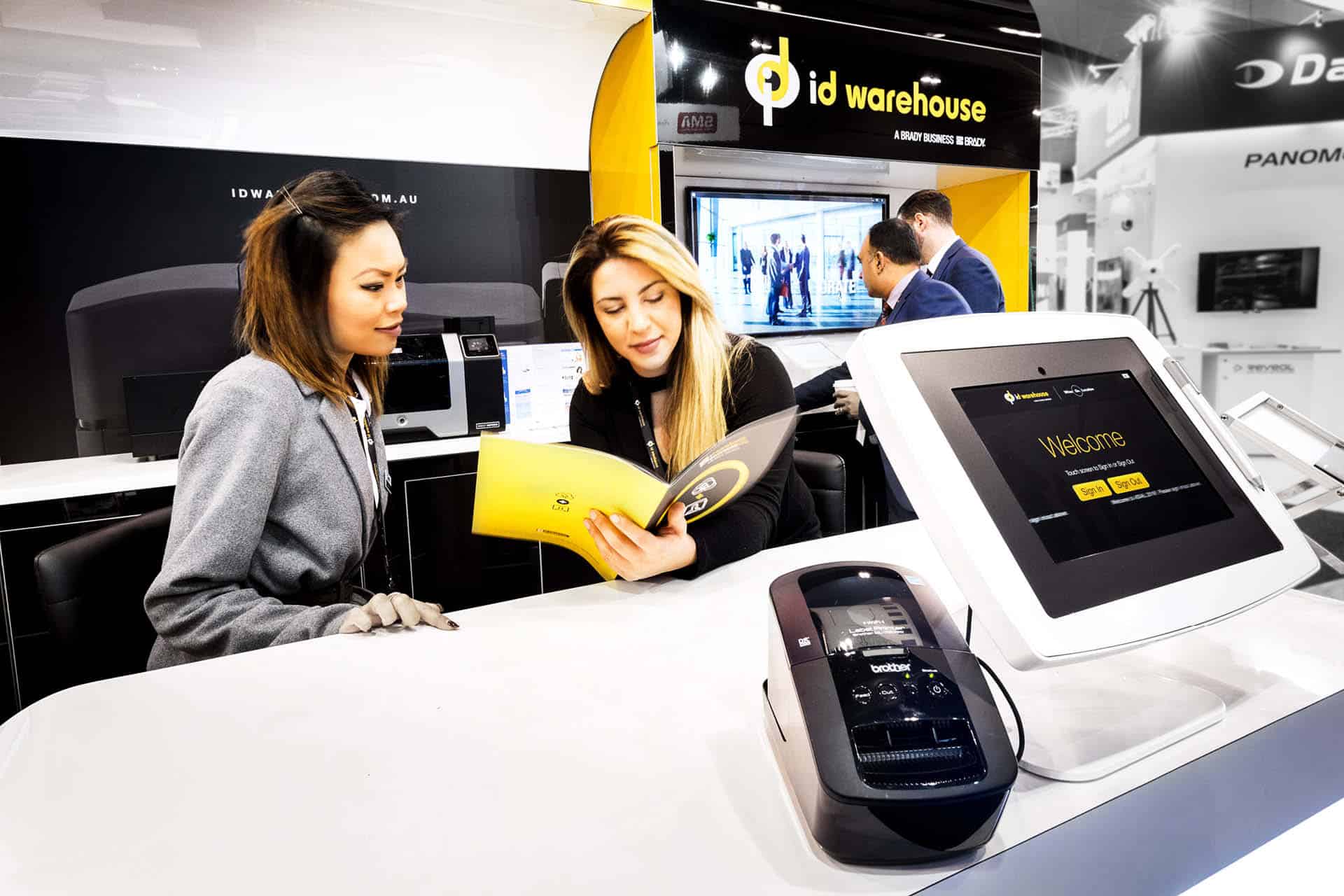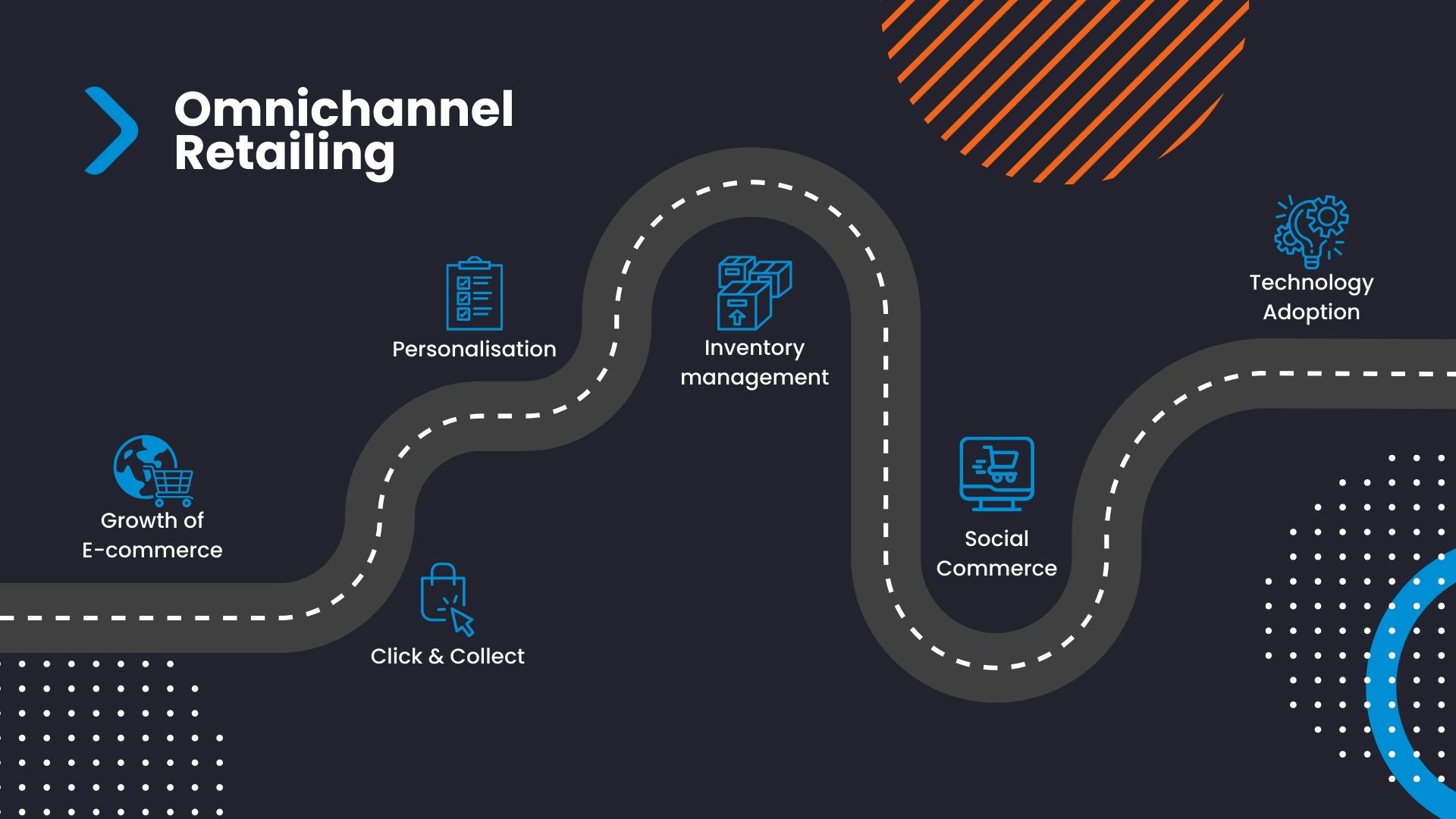
What is Omnichannel Retail Marketing?
Omnichannel retail marketing is a customer-focused approach that provides a seamless shopping experience across various sales channels, such as physical stores, online websites, mobile apps, and more. It aims to provide customers with a convenient, flexible, consistent and unified seamless experience, ultimately enhancing the overall shopping experience.
Benefits of Omnichannel Strategies
An omnichannel retail strategy is a way to strengthen relationships with customers by offering them a smooth and frictionless service across multiple channels including various platforms and devices. This works to provide them convenience and worthy experiences.
In addition, omnichannel retail marketing can help marketers understand the pattern of data and tie all of it together in a way that creates a meaningful and personalised experience for a great customer experience. This can be achieved by using platforms that offer data reporting, by collecting online customer reviews, and the traditional method of in-store data collection or surveys.
Omnichannel retail can also streamline logistics and ensure that customers are not left disappointed due to a lack of stock. For example, if targeted ads for a particular product are selling exceptionally well in a specific area as compared to another location, Inventory can be adjusted to ensure that more quantity of products are available in the location that has higher demand.
A successful omnichannel retail strategy helps with understanding the customer journey, which also points to customer retention. It also helps in engaging with customers in terms of providing information and solutions about their needs.

Omnichannel Retailing in the Australian Market
Omnichannel retailing grew strong in the Australian market because it provided a seamless and consistent customer experience across all touchpoints. This involves integrating systems, data, and processes to enable real-time information sharing.
Following is some of data collected about omnichannel retailing in Australia:
Growth of E-commerce, driven by factors such as increased internet penetration, mobile shopping, and changing consumer preferences. This is also a global constant, and not just in Australia. Retailers everywhere are investing in online platforms to cater to the growing number of digital shoppers.
Click-and-collect, many Australian retailers offered click-and-collect services, allowing customers to order online and pick up their purchases from physical stores. This blended approach combined the convenience of online shopping with the immediacy of in-store pickup.
Personalisation, here, retailers leverage customer data and analytics they collect in order to personalise the shopping experience. This includes targeted marketing, product recommendations, and customised promotions.
Inventory management, efficient inventory management and order fulfilment across channels were critical to ensuring that customers could access products when and where they wanted.
Social commerce, social media platforms became popular for shopping, and retailers were exploring social commerce strategies, including “Buy” buttons and shoppable posts as seen with Facebook.
Technology adoption, retailers were adopting technologies such as RFID (Radio-Frequency Identification), IoT (Internet of Things), and AI (Artificial Intelligence) to enhance inventory visibility, improve supply chain management, and offer personalised recommendations.

Activating Omnichannel Strategies
Customers leave a digital trail that comprises a wealth of data which includes their browsing habits and preferences. However, deciphering and extracting relevant information from this vast dataset can pose a significant challenge for brands.
The following practises are some ways to jumpstart a brand’s omnichannel retail strategy.
Use consistent messaging across all channels. A study by Interacting Advertising Bureau (IAB) showed that ensuring consistent messaging across various channels has the potential to boost consumer purchase intent by a significant 90%. Given that customers may engage with a brand through diverse channels, it’s crucial to define the key information that a brand wants them to receive in order to linger. It’s essential to train staff from marketing, sales, and customer support teams to convey a unified and coherent message.
Next is to identify and make accessible important assets that customers will need throughout the brand campaign, and offer it to them with a touch of personalisation. Content must be personalised right from pre-sale until the technical support phase (or post sale) in order to increase customer loyalty and retention on the brand’s platform that the customer uses.

Another practice is to provide an overall consistent experience to the customer. According to a study by SDL (an intelligent language & content company), 60% of millennials expect consistent brand experience across channels such as in-store, online, or mobile phones.
Omnichannel marketing empowers a brand to transcend mere messaging and craft a seamless experience for customers across all available channels. Crafting experiences is not a one-size-fits-all endeavour since customers can engage with a brand through diverse touchpoints. They could shop online and pick the product from the nearest store or purchase something from the retail store and get it shipped to their address.


Furthermore, customers may interact with different departments within a company, spanning from offline sales personnel to online customer support. It is, therefore, crucial that all are trained and work in coordination to provide an exceptional and consistent service to the customer.
A known practice that boosts customer loyalty is to ensure continuity in communication. In addition to maintaining consistency in messaging and experiences, marketers must also consider continuity when devising their omnichannel and account-based marketing strategies, as it plays a pivotal role in achieving success. Let’s assume a customer has added an item to his cart and has forgotten to complete his transaction. It is imperative to remind the customer to complete the transaction by sending them personalised emails, push notifications, and remarketing messages. A disconnect in communication can result in lost conversions, as customers may not recall abandoned shopping carts without proper reminders.
It is also a must to improve the omnichannel retail experience by integrating data-driven marketing into the brand’s strategy. In a study by Forbes Insights and Arm Treasure Data, 40% of the executives surveyed said that personalization has helped them to maximise their sales. Data-driven marketing provides you with all the necessary information about the customer, their behaviour, and their preferences. Customer data can be used to personalise the buyer’s journey and to deliver the right message to the right audience using the right channels. It will also help a brand to engage and retain more customers into its platform.
Being Customer-Centric Vs Campaign Centric
The battle between focusing on customer needs and adhering strictly to brand campaign guidelines has become more pronounced than ever. In the retail industry, where multiple channels and touchpoints intersect within the customer journey, finding the right balance between the two is critical for success.


While brand guidelines play a crucial role in maintaining a consistent image and message, they must be flexible enough to adapt to the diverse needs of today’s consumers. Retailers must recognize that consumers prefer a personalised customer experience that caters to their unique needs and preferences. This personalised approach is the cornerstone of successful omnichannel retailing, where each interaction is tailored to provide value to the customer.
The retail industry, deeply embedded in the brick and mortar store model, has evolved into a landscape where shopping online, customer engagement, and personalised experiences are paramount. This evolution underscores the significance of tailoring strategies to meet the unique needs of customers, who increasingly expect a unified experience irrespective of the channel or device they choose.
The transition from a single-channel approach to encompassing multiple channels and touchpoints has made it clear: businesses must provide seamless integration. Customers anticipate a frictionless experience as they traverse online and offline channels exploring different customer touchpoints. It is in this integration that retailers can fulfil the expectations of today’s tech-savvy consumers.

Furthermore, the omnichannel approach extends beyond the realm of traditional retail. It encompasses the digital world, where customers research products, compare prices, and make purchase decisions across multiple platforms and devices. Understanding this behaviour is vital for businesses looking to drive loyalty and revenue in today’s retail environment.
A great example of the benefits of prioritising customer needs over strict campaign guidelines can be seen in the delivery of personalised shopping experiences. Retailers that focus on the customer journey map and identify pain points can resolve issues and provide more insights into consumer behaviour. This data-driven approach not only enhances the overall customer experience but also leads to more successful marketing campaigns.

Advantages of Omnichannel Customer Experience
A brand that has a strong omnichannel strategy has the ability to be agile in terms of quickly responding to market changes and shifts in buyer behaviour in the retail world. Using tools and analytics, they are also able to research and discover future trends.
Brands should empower customers by enlightening them on how to make informed purchase decisions. This will lead to higher ROI and customer loyalty because the customer felt the brand’s gesture of care.
Consistency among all the brand’s departments will remove misinformation given out to customers, making sure that information shared is correct and uniformed. A customer who is less confused with a brand’s services will always spend with that brand due to the ease of doing business.
Also, data used for interactions must be relevant. If customers feel that a brand is in-tune with the current environment, customer situations, and preferences, customers will always relate and turn to that particular brand with whatever product or service the customer might need.
Lastly, a brand must never question the power of convenience. The attention span of customers is always fleeting, and a brand that makes life easier for their customers will always have an edge over its competitors. Businesses who complicate their operations at the expense of their customers’ time and energy will risk losing customers.

Customer Engagement Platforms or CEPs
These platforms empower marketers with actionable insights, allowing them to craft highly tailored journeys for their customers. CEPs offer a robust arsenal of intelligent analytics and sophisticated segmentation tools, ensuring the efficacy of your omnichannel approach. By leveraging these capabilities, you can not only align your strategy with the dynamic preferences of your customers but also bolster customer loyalty and retention.
One of the remarkable transformations brought about by CEPs is the infusion of personalization based on individual product preferences and campaign responses. This game-changing aspect is particularly pronounced in the realm of omnichannel retailing. It enables brands to connect with their customers on a deeper level, tailoring their experiences to match specific desires and behaviours across various channels.
CEPs serve as a compass in the intricate world of modern retail. They enable marketers to navigate the complexities of customer data, ensuring that the omnichannel strategy remains a customer-centric endeavour.

Future Insights
Engaging with the customer can be quite a challenge especially when vying for their attention along with the several apps on their mobile phone. You could face a greater challenge if your app is not used frequently. That’s where marketers think like a customer and push relevant content to them on their preferred channel to keep them engaged.
Omnichannel marketing offers the tools to analyse the customer’s behaviour and preferences, and send them content according to their preference. Whether you use a poster maker for traditional ads or have a cool social media campaign at hand, you need to know your audience well enough.
